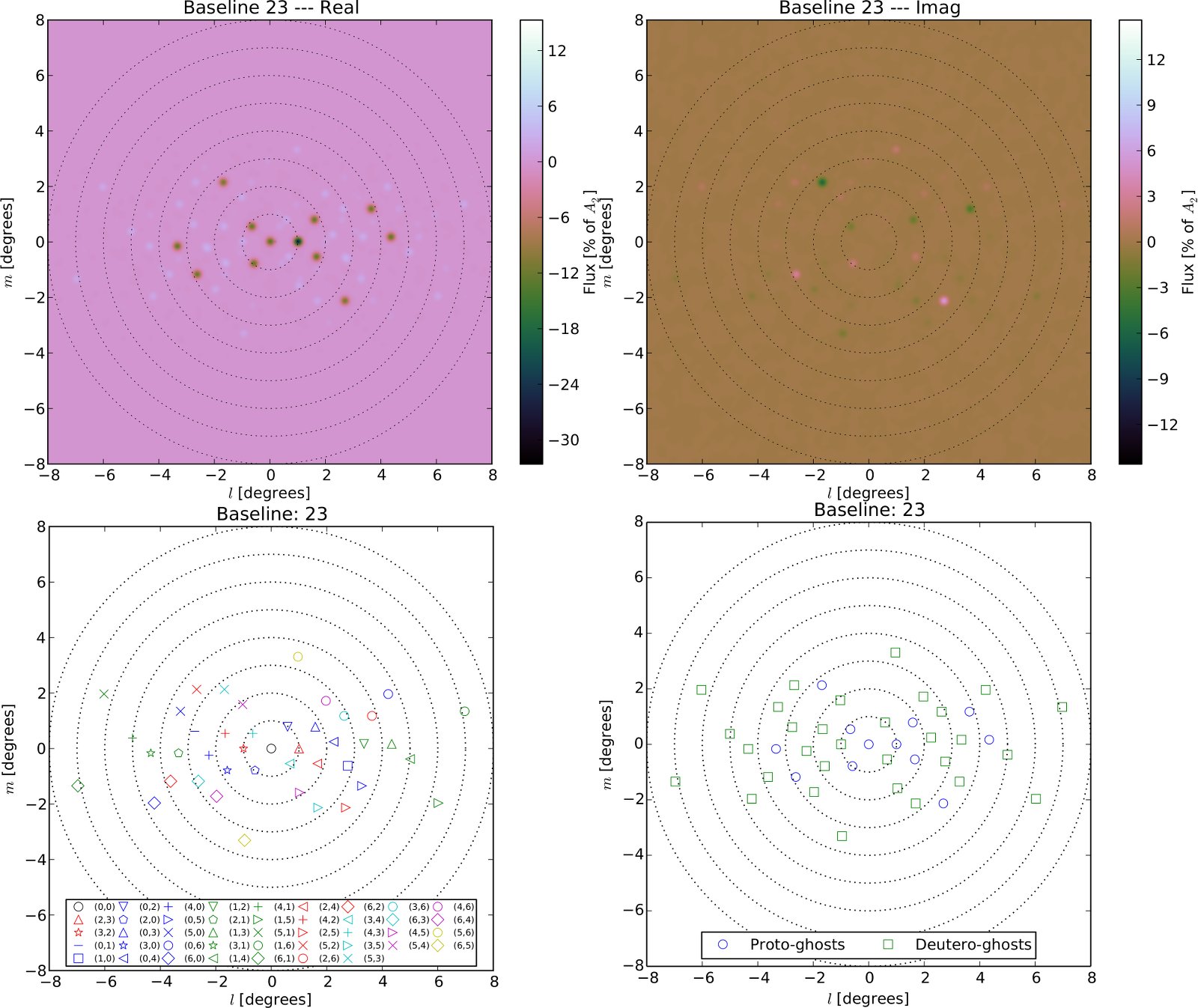Daily Image
24-02-2016Ghost hunting
| Submitter: | Stefan Wijnholds, Trienko Grobler and Oleg Smirnov |
| Description: | In radio astronomy, ghosts are not just a figment of our imagination. Although their nature has eluded us for a long time after their first spotting in a WSRT 92-cm observation by Ger de Bruyn, ghosts were explained as the result of missing sources in the sky model used for self-calibration by simulations developed at Rhodes University and SKA South Africa (see the AJDI of 28 february 2014). Those simulations were tailored to arrays with a regular East-West layout, such as the WSRT. This obviously makes one wonder whether ghosts can also emerge when we use irregular array layouts, such as the layout of LOFAR and those envisaged for the SKA and, if they do, how we can detect them without confusing them with real emission. In a recently published paper, we extended the geometrical description underlying the simulations to arbitrary array layouts and introduced a perturbation analysis treating the self-calibration error as a perturbation on the true gain values. The extension of the geometrical description permitted us to apply our simulations to the KAT-7 array, which has an irregular array configuration. As in the case of the WSRT, we found that each baseline produces its own ghost pattern, but that this pattern can be complex valued. An example is shown in the top panels of today's image. In this example, a 1-Jy modelled source was placed in the phase center while a 0.2-Jy unmodelled source was located at (1, 0). Since a single baseline already produces a seemingly complicated structure, finding an intuitive explanation felt like a daunting task. Fortunately, we were able to predict the location as well as the baseline causing a specific ghost by introducing the perturbation analysis. The results are shown in the bottom left panel. They reveal that ghosts form in two distinct types of symmetrically opposite pairs. Intuitively, one would already expect the ghost associated with baseline (r,s) to form a pair with the ghost associated with baseline (s,r). These ghost pairs, which are symmetrically opposite around the phase center, can indeed be found. However, it turns out that for the ghost pattern of baseline (p,q) the baselines (p,s) and (r,q) also form ghost pairs, which are symmetrically opposite around the mid-point of the line connecting the modelled and the unmodelled source. These ghosts can be considered to be associated with phase closure errors introduced by the incomplete sky model. In our perturbation analysis, we also found that the fluxes of some ghosts scale inversely proportional to the number of elements in the array, while the fluxes of others scale inversely proportional to square of the number of elements in the array. We refer to the first category as proto-ghosts and to the second as deutero-ghosts. Proto-ghosts are typically brighter than deutero-ghosts. The bottom righ plot shows which ghosts fall into which category. Armed with these new insights, we will continue our hunt for ghosts, so watch this space! |
| Copyright: | ASTRON / Rhodes University |
| Tweet |  |
